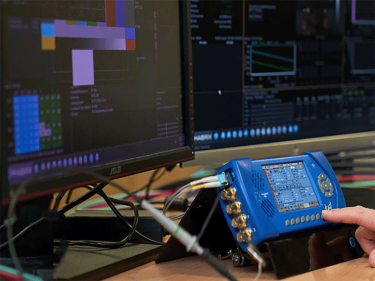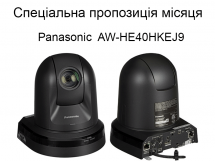| Óêðà¿íñüêà | English | |||||||||||
|
|||||||||||
| News | About company | Service-centre | OB Van/SNG Rental | NextGen Energy Solutions | Contact us |
|
|
Engineering Service, Inc.
» News News PHABRIX is delighted to announce that the 8000th of its Sx handheld unit is about to roll off the company’s production line. This significant milestone helps cement its position as the industry’s most popular test and measurement device despite only being launched not even 14 years ago.
PHABRIX was established in 2005 by ex-Oxtel and Miranda engineer Phillip Adams who had identified a gap in the market for an effective solution to test and monitor the then new 3G-SGI signals that were starting to make an impact in the industry. The first SxA prototype was unveiled at IBC2007, with the product launching in July the next year and instantly winning the prestigious Peter Wayne Award for Innovation. It was very much the right product at the right time. Interest in 3G-SDI was starting to accelerate, the new company had access to early silicon from FPGA inventor Xilinx (PHABRIX actually stands for PHillip Adams BRoadcasting In Xilink), and it was able to leverage the new chipset to produce a model that featured all the functionality of its rivals at a significantly lower price. What’s more, via a teardown of a PlayStation Portable gaming device, the new company was able to source a screen that meant it could pack all these features into a genuinely capable handheld unit. “Our product was a signal generator and analyser where most competitor’s products were just analysers,” said company founder and now CEO, Phillip Adams. “Companies had to buy a separate generator and a separate analyser that would have to be moved around on a trolley. Our product was both portable, and a third of the price, so companies could afford to have more of them. There was a real need, we knew that because we’d been developing broadcast products for years, and it also rode a technology wave. And, since then, we’ve innovated a lot.” And now, 13 years later, the company is still making SxAs, and, almost uniquely, is still supplying them with free-of-charge software updates. The range of devices it offers has expanded considerably as the industry has evolved, adding models and capabilities to accommodate the shift towards both new broadcast formats, and the migration towards IP. The use cases for PHABRIX handheld devices have expanded as well, with units in operation in as diverse environments as the Sydney Opera House, the Japanese police force, the Paris Metro, NASA and SpaceX. “We have several companies with 80 or 100 units and they’re using them everywhere, and we had more than 100 units in use at the Tokyo Olympics this year,” says Adams. “As for the future, the broadcast industry is difficult to predict. At the moment the momentum is with 25G-IP, 12G-SDI, 4K, and 8K, but there is a whole load of detail within that. For example, different files and formats to allow for, and we’re seeing new challenges to address with HDR, with audio, and with ensuring remote operations are all smoothly connected. Then you have to ask how long will a handheld unit actually remain a handheld, as everything goes virtual.” « To the list of news |
|
|||||||||||||||||
 |
+38 (044) 593-18-20 +38 (073) 593-18-20 +38 (096) 532-96-82 +38 (095) 532-96-82 Service center Telegram @Engineer_Service |

|
|
|||||
 |
e-mail: engineer-service.tv 15 Vavylovykh str., Kiev, 04060, Ukraine Authorized service centre of Panasonic, Sony, JVC, Fujinon, Canon |
|||||||







